In recent years, summer residents have become interested in such a forgotten culture as Kohlrabi. Instead of Kochan, this cabbage grows a juicy dense stovel. Its taste looks like a nickeeper from the coastal cabbage, but only juicy, rushing, more tender, without bitter notes.
Common culture
This two-year culture is considered a type of that cooked cabbage, which we used to take in vegetable departments of shops, in the market grown in huge quantities in the fields of agrarians. Kohlraby during the first season gives the elongated leaves of dark green color and stem, which is gradually thickened and forms a stereo-shaped or slightly oblong shape. It is such a steblopelod that can be taken for food purposes. In the second year of life, floral stems appear on the plant, and then the seeds ripen. Stem is rich in fructose, glucose, different vitamins (C, E, U, F, B1, B2, pantothenic acid, carotene, biotin), fiber, potassium, sulfur compounds, iron, calcium. Historians report that in the Roman Empire Kohlrabi (then the vegetable called Caulorapa, translated the "cabbage repa") was most of the diet of the poor and slaves. Now the varieties of Kohlrabi differ in shape (spherical, oblong, spherical, egg-shaped, flattened), the duration of the growing density of density and stubble color (it may not only be light green, but also yellow, raspberry and different shades of violet). Inside, it is predominantly whitish (or with the presence of a cream shade). Delicious salads are obtained from different types of kabera Kohlrabi. It is combined with carrots, cucumbers, dill, parsley, salad leaves, apples, toopinambury, boiled eggs, boiled chicken breast, celery. The kids love to "hurt" Kohlrabi, if the appetizing stem is just cut into slices. The "cabbage turnip" can be baked, fry, prepare for a couple, but then part of its valuables will be lost.
Get acquainted with Kohlrabi cabbage varieties
Early varieties should be chosen by those who want to eat this vitamin cabbage at the end of June. This group includes varieties:
- "Moravia";
- "Erfordia";
- "Vienna White 1350" (as well as purple);
- "Prague white";
- "Early Knaufa";
- "Gabi";
- "ATENA";
- "Stepper field."
Now we will list the average and late varieties:
- "Violetta";
- "Giant";
- "Alka";
- "Delicious blue" (or white);
- "Karatago";
- "Goliath White" (as well as blue).
Collar Cabbage Kohlrabi can be obtained from such varieties: "Alca", "Optimus Blue Reair", "Sonata", "Vienna Purple", "Goliath Blue", "Violetta", "Coszak F1", "Delicious Blue", "Delicious Red "
"Vienna White" - after the appearance of shoots, this cabbage is ready for cutting 65-75 days. Suitable for both greenhouses and beds without shelter. Its leaves are smooth, lovoid shape, their color is grayish-green. A shape of a stebleptode is a flat-core or as a "ball" (with a diameter of about 9 centimeters), and the color of the light green, the inner part is juicy, delicious. It normally transfers drought and hot days, but there is a risk of defeat by such a disease as Kila. And it is necessary to cut on time, otherwise it grows quickly (stupid).
"Vienna purple" (or blue, or blue) - ripens a little later than the "sister" ("Vienna White"). Lire-like leaf veins and petioles have a rich purple color. Outside, stebleplee purple, and when conceding you will be white flesh.
"Optimus Blue Reair" is the most common in the northern regions, a growing period from 68 to 90 days. The leaves are similar to those that grow in the "Vienna White", but they are larger. Stebalplee is obtained either by flat-terminal or rounded. Peel purple. Less prone to growing, is stored longer.
"Moravia" - its dark-green leaves have a small size, and a flat-green stem-green stalemage, pulp inside, is delicious, juicy. Do not delay it for a long time on the plant, otherwise it grows. Not subject to long storage.
"Prague white" - recommended for distortion in greenhouses or for open soil. Light green rounded or slightly plated fruits quickly grow up, are not stored for a long time.
"ATENA" - 120 days passes from shoots to maturation, the mass of green stems varies from 180 to 220 grams.
"Sonata" - this medium grade is successfully cultivated even in the regions with a cold climate. The hybrid gives purple steblacks, their weight is approximately 650 grams.
"Coszak" - and this hybrid is well suited for a cold climate. On the plant is formed a yellow-green stovelode. Middle weight from 450 to 600 grams.
"Violetta" - the grade loves many Kohlrabi fans. This late grade form a rounded flat stem with a beautiful dark purple color. Their diameter is up to 9 centimeters, the mass of one - from 1500 to 2000 grams. High-yielding grade, which is also stable to freezes.
"Delicious red" is distinguished by the rapidness and color of fruits - they are reddish-purple. Form - flat-circular. Of the advantages, you can also be distinguished and good dependent.
"Delicious blue" is used to obtain a harvest in the open ground (in the garden or in the field). Even if they were detained with cleaning, the stebleptode does not develop for a long time, remains with gentle content. "Balls" have painting of violet tones.
"Giant" - the weight of large stovelodes of this variety from two to three kilograms! Accordingly, the diameter of them is more than from other varieties - from 15 to 20 centimeters. The top of the fetus slightly concave, their painting is white-green. Content inside a very juicy and gentle taste. There are other advantages: normally transfers hot and arid periods, gives stable yields that have a lot of effusion. Plants of this variety from each other place on a little more distance than other cabbage (50-60 centimeters).
"Karatago" - from seeding to full ripening fruit runs about 155 days. "Rusta" is obtained by light green, weighing from 200 to 300 grams, in the form of a round. The advantage is that Stebalod is resistant to cracking and webiness.
Features of growing and care for cabbage Kohlrabi
Kohlrabi spread through other countries from Sicily. But do not think that it needs warm and too capric. Kohlrabi cabbage cultivation is quite possible not only in the southern regions, but also in the regions of the middle strip and even in the northern regions.
Kohlrabi cabbage seeds, highlighted at a temperature of from 10 to 12 degrees, usually germinate four days later.
The best growth and development of this cabbage is observed when the temperature is kept in the range from 12 to 18 degrees. If it does not rise above for several days +6, then the spherical thickening on the stem may not appear.
Delicious "cabbage repka" is obtained only from high-quality seedlings. If young plants stretched strongly, are pronounced or worried at home to such an extent that the stems are significantly cooked, it is hardly thickening. Even if the stebleplodes and can form, then in structure it will be with fibers and rigid.
The territory for Kohlrabi allocate the one where the pumpkins, zucchini, carrots, beans, peas, cucumbers, swallow, onions, onions, potatoes have grown in the past season. But in those places where cruciferous, Kohlrabi did not place.
Good yields give on loams, soils consisting of humus and peat, with a large supply of nutrients.
On acidic soils, delicious stebleckodes are not born, therefore, without fail, with a peroxide, crumble on the ground the chalk or dolomite flour.
The beds should be well covered, allowing to accommodate in a half.
Soil under this cabbage should be wet, plants need sufficient amount of water. If the moisture is not enough, then a number of varieties are trees, a crack is noticeable on it.
Preferences give to those fertilizers that quickly dissolve are easily absorbed.
How to squeeze Kohlrab cappist?
Sowing seeds of this type of cabbage is usually produced in small boxes. The depth of the sealing should not exceed two centimeters. The soils are prepared from equal parts of peat grounds, humoring, rod. To the bucket of such a well mixed mixture, a teaspoon of ammonium nitrates, potassium sulfate and superphosphate, as well as 200 grams of ash. First, the grooves are spanging with a very hot manganese solution (for disinfection). When the solution is absorbed, then seeds can be folded. If the box then cover up with glass (or put in the package), then the seeds will warm in three days. Another way to speed up the germination of seeds is to accelerate: in front of landing, put them for a while on a well-moistened fabric. Let us list several possible dodging sowing:
- from February 15 and before his end - in warm room or heated greenhouse, then early grades will give a harvest already at the end of May or early summer;
- in April (from 1 to 10) - early grades can be sown in a greenhouse (or on a home window sill), then the cutting can be carried out in summer;
- the last few days of June or the first decade of July - seed seeds of early varieties to obtain seedlings, so that later it was possible to get a re-harvest;
- in May (or the first numbers of June), you can sow seeds of late varieties, then such seedlings will allow you to get a crop in the late autumn so that it can be stored in winter.
When the sprouts crush out of the ground, then the glass from the box is removed and transfer shooters to such a room, where the temperature keeps from 5 to 10 degrees. Sprouts must be cautiously water using a teaspoon for this. When the seedlings already appear in addition to semi-siardial real leaves, then sip them into plastic cups. In order for the seedlings of Kabbesty Kohlrabi actively developed, it can be filtered. Shortly before the transplantation to a permanent place in the garden, start hardening the plants, cutting watering and often ventilating the room. Or in the afternoon for a few hours, let the seedlings stand on the balcony.
Kohlrabi cabbage: Growing in open soil
Young plants usually "move" when their age is about 35-45 days in early May. Late varieties "move" in June. Kohli's cabbage landing in the wells on the beds are carried out so that between the plants there is a distance of about 20-27 centimeters. Between the rows, leave 25-40 centimeters. The numbers are approximate, they depend on the early grade or late, which in weight are indicated on the sachet sachets.
Important: The young plants Kohlrabi when landing in the hole do not block, plant the way they were in a cup (or a pot).
Some inexperienced summer houses make a mistake, blocking the plant to real leaves. Such a plant has the process of forming thickening on the stem makes it difficult. It is not necessary to place this type of cabbage too close to each other, otherwise the growth is slow.
Kohlrabi is advisable to spend in the evening or in frowned weather, then it is faster and easier to come true.
Kohlrab cappist should not be dipped. If you pour to the stalk to the stalk, then the stebleptode will pull up, as a result of which its form will turn out as a cylinder. In general, the stem begins to thicken when the plant has seven leaves already.
Cabbage can be located between rows with cauliflower. It is noted that then both crops give good crops, such a neighborhood goes to them. If you transplanted young plants on the prepared beds, and at night, it is cold, then do a few arcs and cover the planting with a film or Loutrasil. Otherwise, with sharp drops of the plant will give arrows with flowers, and "repka", alas, will not succeed.
Those dackets who do not have the ability to deal with the seedlings, seed seeds in May immediately into the grooves on the garden. Only it is necessary to hide them, because in the late spring in recent years there are often long frosts. Then the grown seedlings thin, observing the distance indicated on the sachet with seeds.
Subsequent Cabbage Care Care is complete, includes several items:
- Regular irrigation - especially it is important when plants are in the phase of active growth, and when the process of formation of steblamplodes on them occurs.
- Tearing appearing near the planting of weed herbs.
- Feeding. The first is appropriate to spend a week after transplanting to the garden, taking nitrogen fertilizers for it. After two (or three) weeks, I watery by adding a distance to the water. The third feeder is made by water into which superphosphate and potassium compounds are added.
- Mulching, which contributes to longer preservation in moisture ground.
Harmful insects can be hung on Kohlrab:
- The word - the colony of these small insects suck the juice from the parts of the plant, as a result of which the leaf plates are covered with a wave, lose a bright color and twisted. The affected cabbage instances are noticeably lagging behind the growth. For the purpose of prevention, constantly remove weeds around the landings, spend spraying with Rovikirt. It is very good if the beds with Kohlrabi will be located between the rows of dill, celery or carrots. These cultures are attracted to this place the mushkas-bumps, "Ladybugs" and other useful insects, called entomophages that feed the soot.
- Cabbage Belyanka - this blocker butterfly can often be found near the cultures belonging to the cabbage family. Her larvae is active green caterpillars with yellow strips can rapidly glue Kohlrabi leaves. As soon as these larvae noticed, immediately take measures, resorting to the spraying of Kollari with a white mustard solution or drugs - "Inta-Vir", "Ambush", "etaphos", "Cimbush".
- Capportean fly - gray females of this insect in the spring lay off their eggs next to Kohlrabi stem. The larvae appeared in seven days rushed to the roots and stalk and eat their juicy parts. To prevent their appearance, be sure to follow the rules of the crop rotation, in the fall do not neglect the deep plot. In the spring, you can cover the ground around the seedlings "Nanacanka". And the affected specimens process "Inta-Virogram", "Ambush", Rovovikurt.
If gilders have little time to care for Kohlrabi, there may be diseases:
- Kila - pathology, developing on roots in the form of spindle-shaped growths, first their color is the same as the roots themselves. But gradually they become brown and rot. Usually it happens if the reaction of the soil is acidic, the rules of the crop rotation were not observed, or fresh manure was added when landing. Such fading plants will have to remove from the site, and the well is good to disinfect.
- False powdery dew - distribution mainly occurs through seeds mushroom contracted by disputes. Characteristic symptoms: on leafy plates yellow spots, and from the bottom you can notice the raids of the whitish color. How to avoid illness to do:
- before planting seeds, it is advisable to process;
- at the very first signs, drink the plants with sulfur powder. Such treatments need to be done three;
- spray the diseased plants (and located next to them) burgundy liquid.
- Mosaic - If the leaf plates are deformed by the plant, necrosis stains appear on them, then these instances affected by the virus should be immediately removed.
Cleaning ripened "stem rivals" do in a timely manner. Overrevish kolrabi fruits lose tenderness. How to understand that the stem is ripe? Focus on size, timing timing. And one more hint. If the marigold can easily make a scratch on the peel, then the fruit is ready for use.
Another interesting observation. If the early grade is gently cut down the fruit in such a way that the lower part remains on the plant (during cooking you cut it all the same), then the plant will again form two "repkaments", only in size they will be smaller first. Plants of autumn (late) varieties pull out completely (with the root). Cut each fetus to the knurling and leaves, and then fold into the boxes, spray with wet sand and take storage in the cellar. There is an opinion that if the root of Kohlrabi does not delete, then the crop will be stored longer.
Now you know how to grow Kohlrab's cabbage in such a way that she gives an abundant harvest. There is information that Kohlrabi during regular use prevents the formation of tumors (especially intestines), strengthens the heart muscle, increases resistance to infections, is useful in pathologies of the digestive system, respiratory organs, tendency to atherosclerosis, with asthma, tuberculosis, obesity.

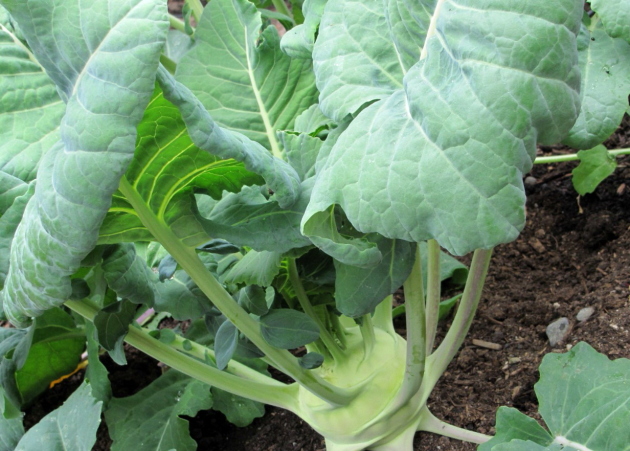
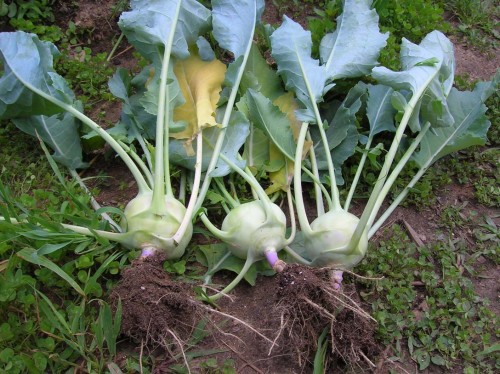
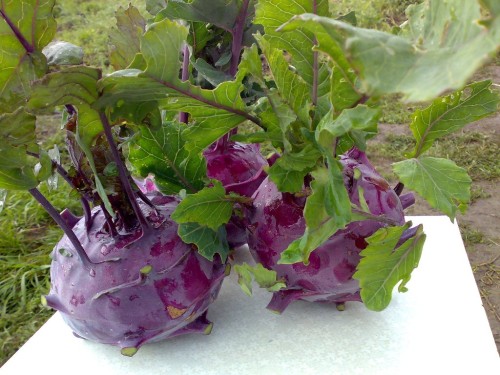
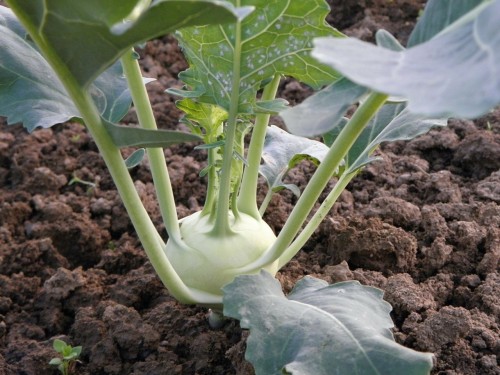
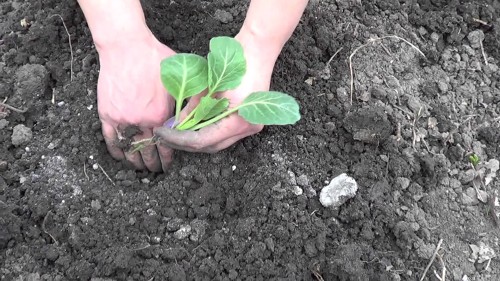
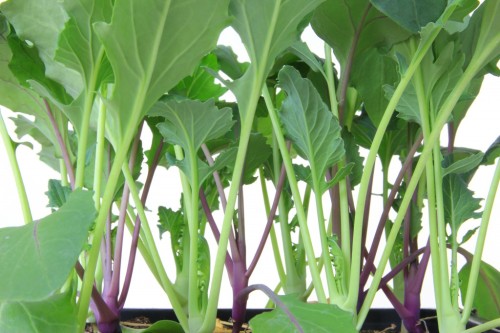
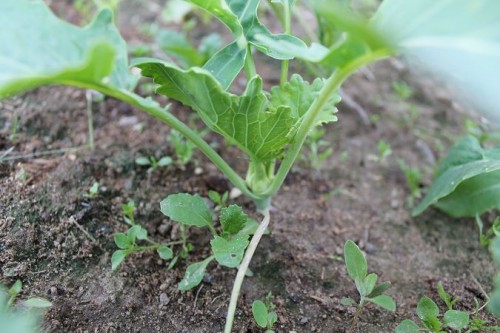
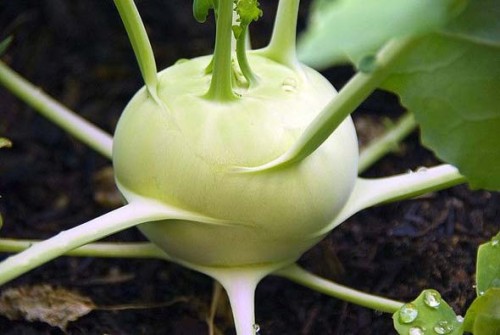
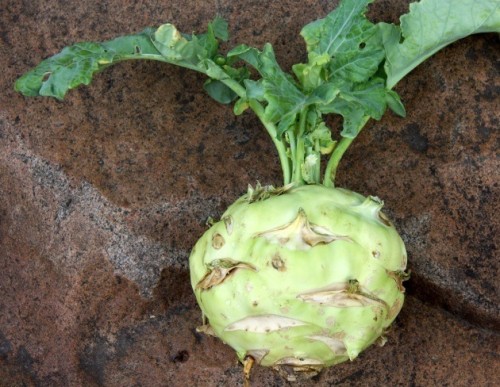
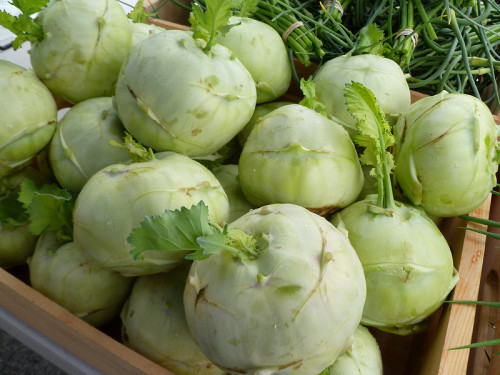
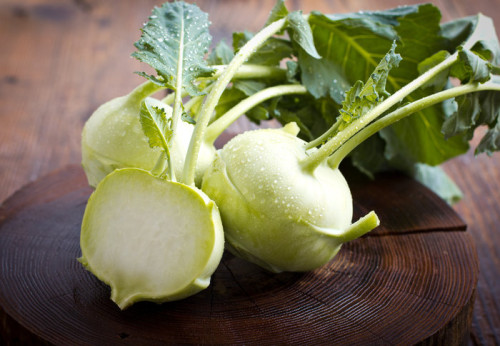

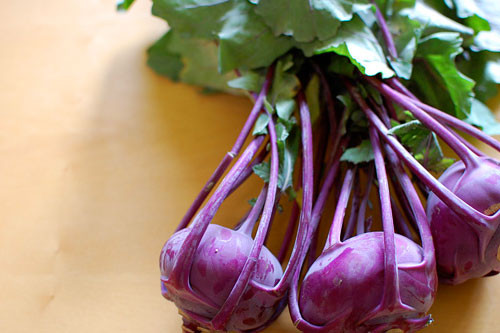
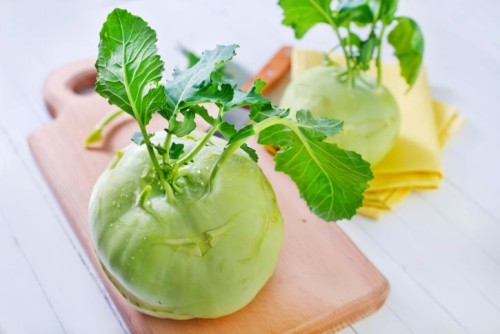












 Start a discussion ...
Start a discussion ...